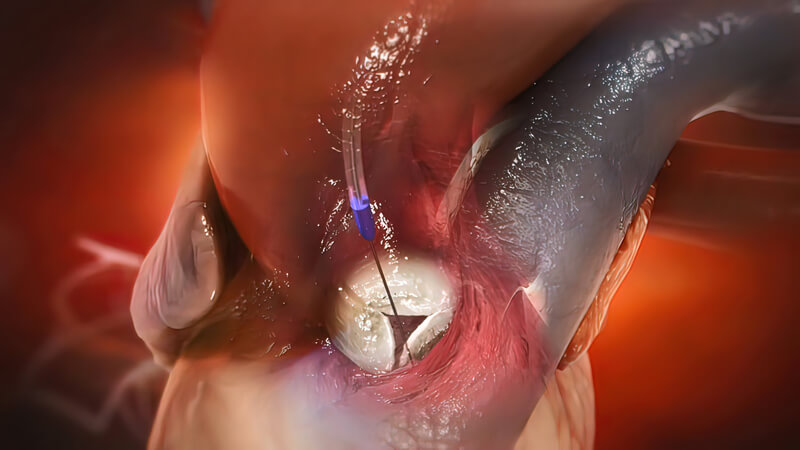Transcatheter Aortic Valve Replacement (TAVR) (also called Transcatheter Aortic Valve Implantation (TAVI) is a procedure which involves replacement of a thickened and narrowed aortic valve of the heart through the blood vessels. Located between the left lower heart chamber (left ventricle) and the body’s main artery (aorta), the aortic valve regulates the blood flow from the heart to the body. If the aortic valve doesn’t open correctly, blood flow from the heart to the body gets reduced. Billing and coding for this cardiac condition can be challenging. Outsourcing these tasks to a reputable cardiology medical coding company is a great option for cardiologists to document TAVR as well as other treatment options and get reimbursed on-time.
TAVR Procedure – How Is It Performed and What Does it Involve?
TAVR is generally an option for people who have aortic stenosis (that causes signs and symptoms), have an intermediate or high risk of complications from surgical aortic valve replacement, have an existing biological tissue valve (but it isn’t working well anymore) and who can’t undergo open-heart surgery. Potential risks of TAVR may include – blood vessel complications, problems with the replacement valve (such as the valve slipping out of place or leaking), severe bleeding and infections, stroke, heart rhythm problems (arrhythmias) or even death. There are two different approaches – Transfemoral approach and Transapical approach for TAVR procedure. Transfemoral approach does not require a surgical incision in the chest and therefore involves entering through the femoral artery (large artery in the groin). Transapical approach, on the other hand, is a minimally-surgical procedure wherein small incisions are made in the chest area. The incisions are made through a large artery in the chest or through the tip of the left ventricle (the apex). Physicians in certain cases may use other approaches to access the heart. Imaging techniques may be used to guide the catheter through the blood vessel, to the heart and into the aortic valve. Upon positioning the new valve, a balloon is inflated on to the catheter’s flip (to expand the replacement valve in to the correct position) and the catheter is removed. The procedure can cause infections (from bacteria in the mouth) and therefore it is extremely important to maintain adequate dental and personal hygiene.
Medicare Coverage for TAVR
Transcatheter Aortic Valve Replacement (TAVR) is covered for the treatment of symptomatic aortic valve stenosis. CMS offers coverage for TAVR under Coverage with Evidence Development. In 2012, CMS released a National Coverage Determination (NCD) that provides details of the qualifications of the physicians who perform TAVR and the patients who benefit from the procedure. Below listed are the top coverage criterions specified in the National Coverage Determination (NCD) –
- The procedure is furnished with a complete aortic valve and implantation system that has received FDA premarket approval (PMA) for that system’s FDA-approved indication.
- All TAVR cases must be enrolled in the national transcatheter valve therapy (TVT) registry.
- The patient who is planning to undergo a TAVR must be under the care of a multi-disciplinary team of cardiologists both preoperatively and postoperatively.
- Both a cardiac surgeon and an interventional cardiologist must independently examine the patient face-to-face and evaluate the patient’s suitability for surgical aortic valve replacement.
- IVR cardiologists and cardiac surgeons must jointly participate in the intra-operative technical aspects of TAVR.
- Hospitals must perform at least 50 TAVRs and more than 300 percutaneous coronary interventions per year
Applicable Medical Codes for TAVR
Billing and coding for cardiac procedures involves the use of procedure codes and diagnosis codes on the medical claims submitted to health insurers for reimbursement. Relying on the services of a professional and reputable medical coding company that is well-versed in the changing coding guidelines for the cardiology specialty can help in on-time reimbursement.
CPT Codes
- 33361 Transcatheter aortic valve replacement (TAVR/TAVI) with prosthetic valve; percutaneous femoral artery approach
- 33362 Transcatheter aortic valve replacement (TAVR/TAVI) with prosthetic valve; open femoral artery approach
- 33363 Transcatheter aortic valve replacement (TAVR/TAVI) with prosthetic valve; open axillary artery approach
- 33364 Transcatheter aortic valve replacement (TAVR/TAVI) with prosthetic valve; open iliac artery approach
- 33365 Transcatheter aortic valve replacement (TAVR/TAVI) with prosthetic valve; transaortic approach (e.g., median sternotomy, mediastinotomy)
- 33367 Transcatheter aortic valve replacement (TAVR/TAVI) with prosthetic valve; cardiopulmonary bypass support with percutaneous peripheral arterial and venous cannulation (e.g., femoral vessels) (List separately in addition to code for primary procedure)
- 33368 Transcatheter aortic valve replacement (TAVR/TAVI) with prosthetic valve; cardiopulmonary bypass support with open peripheral arterial and venous cannulation (e.g., femoral, iliac, axillary vessels) (List separately in addition to code for primary procedure)
- 33369 Transcatheter aortic valve replacement (TAVR/TAVI) with prosthetic valve; cardiopulmonary bypass support with central arterial and venous cannulation (e.g., aorta, right atrium, pulmonary artery) (List separately in addition to code for primary procedure)
Diagnosis Code
- Z00.6 Encounter for examination for normal comparison and control in clinical research program
ICD – 10 Procedure Codes
- 02RF38Z Replacement of aortic valve with zooplastic tissue, percutaneous approach
- 02RF38H Replacement of aortic valve with zooplastic tissue, transapical, percutaneous approach
In general, transcatheter aortic valve replacement (TAVR) may provide relief to the symptoms of aortic valve stenosis. However, adopting healthy lifestyle habits like – regular exercise, quitting the habit of smoking, making healthy diet choices, controlling stress and maintaining a healthy body weight can help prevent the reoccurrence of cardiac disorders in the long run. As mentioned above, cardiology medical billing and coding can be challenging. IVR cardiologists, cardiac surgeons and other specialists performing a TAVR procedure can consider the support of a reputable physician billing company to report their services accurately on the medical claims.




